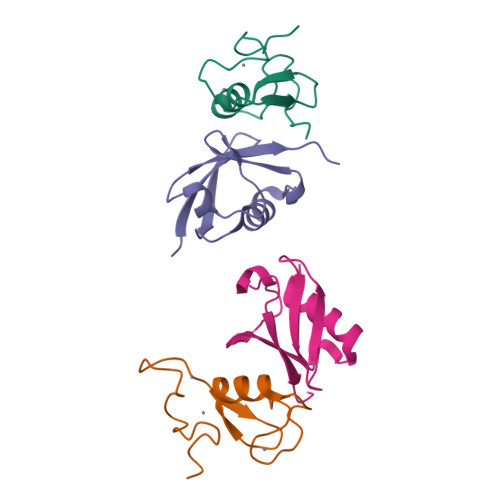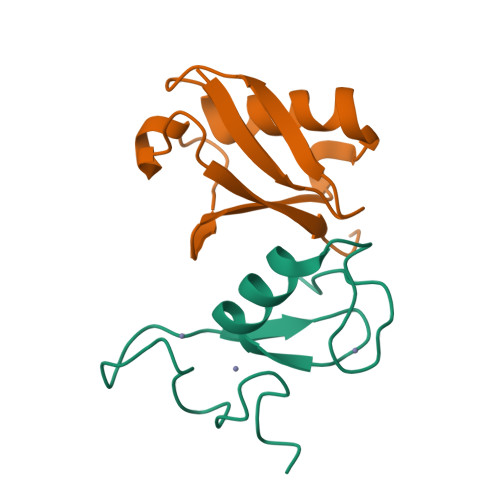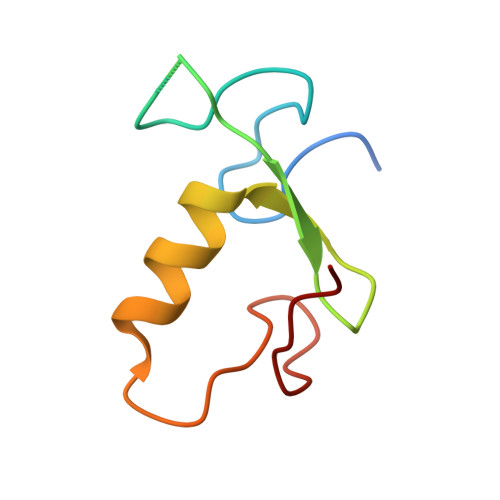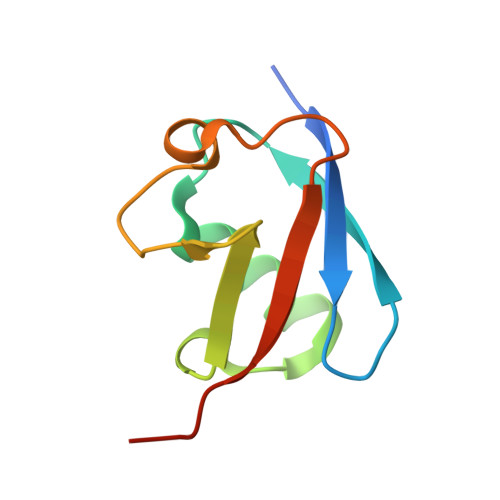Dual RING E3 Architectures Regulate Multiubiquitination and Ubiquitin Chain Elongation by APC/C.
Brown, N.G., VanderLinden, R., Watson, E.R., Weissmann, F., Ordureau, A., Wu, K.P., Zhang, W., Yu, S., Mercredi, P.Y., Harrison, J.S., Davidson, I.F., Qiao, R., Lu, Y., Dube, P., Brunner, M.R., Grace, C.R., Miller, D.J., Haselbach, D., Jarvis, M.A., Yamaguchi, M., Yanishevski, D., Petzold, G., Sidhu, S.S., Kuhlman, B., Kirschner, M.W., Harper, J.W., Peters, J.M., Stark, H., Schulman, B.A.(2016) Cell 165: 1440-1453
- PubMed: 27259151
- DOI: https://doi.org/10.1016/j.cell.2016.05.037
- Primary Citation of Related Structures:
5JG6, 5L9T, 5L9U - PubMed Abstract:
Protein ubiquitination involves E1, E2, and E3 trienzyme cascades. E2 and RING E3 enzymes often collaborate to first prime a substrate with a single ubiquitin (UB) and then achieve different forms of polyubiquitination: multiubiquitination of several sites and elongation of linkage-specific UB chains. Here, cryo-EM and biochemistry show that the human E3 anaphase-promoting complex/cyclosome (APC/C) and its two partner E2s, UBE2C (aka UBCH10) and UBE2S, adopt specialized catalytic architectures for these two distinct forms of polyubiquitination. The APC/C RING constrains UBE2C proximal to a substrate and simultaneously binds a substrate-linked UB to drive processive multiubiquitination. Alternatively, during UB chain elongation, the RING does not bind UBE2S but rather lures an evolving substrate-linked UB to UBE2S positioned through a cullin interaction to generate a Lys11-linked chain. Our findings define mechanisms of APC/C regulation, and establish principles by which specialized E3-E2-substrate-UB architectures control different forms of polyubiquitination.
Organizational Affiliation:
Department of Structural Biology, St. Jude Children's Research Hospital, Memphis, TN 38105, USA.





















